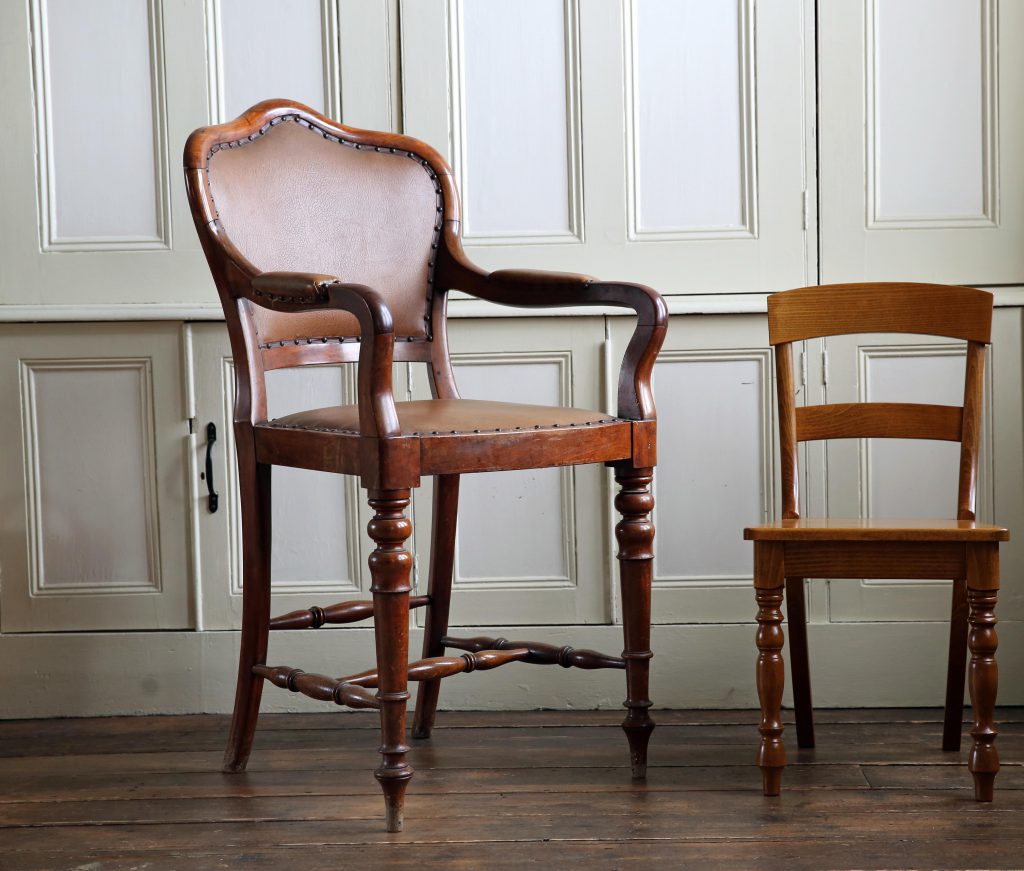Our Object of the Month for September 2018 is an imposing chair used by the chairman of the Board of Guardians of Ripon Union Workhouse. Stylistically, the chair appears to date from the early Victorian period, suggesting that it could have been used at the Ripon Union Workhouse from the very beginning of its history.
Ripon Union Workhouse was built in 1854, 20 years after the Poor Law Amendment Act divided up the whole of England and Wales into poor law unions. Each union was administered by an elected board of Guardians and required to provide a workhouse to accommodate anyone who could not support themselves. In Ripon, as in many other districts in Lancashire and Yorkshire, the Poor Law Amendment Act was strongly opposed, hence the 20-year gap before the Workhouse was built.
Initially there were 36 Guardians overseeing the Ripon Poor Law Union, representing the 32 constituent parishes and townships. The board of Guardians met weekly in the Guardians’ Room at the workhouse to discuss applications for relief, reports on the state of the workhouse and its accounts, and receipts of payments from the relieving officers, who collected and distributed the Poor Rate. There were two types of Guardian: those who were elected annually and those who were entitled to membership because they were local magistrates. The Guardians became politically influential people who wielded great local powers.
The Guardian’s chair is made from mahogany. It originally had a webbed seat, but this has been replaced, most likely during the interwar period, with a plywood board and leather upholstery. The chair originally had casters, which are now missing. The most striking thing about the chair is its imposing height, with the seat standing at an unusually high height of 63cm, so high that the chairman would have required a footstool for his feet. The height of the chairman was further increased by placing the chair on a dais. This configuration was clearly intended to raise the chairman up to a commanding height, a statement of his power and status on the board.
Poor Law Unions and Boards of Guardians were abolished in 1929. When Ripon Union Workhouse passed to the control of North Yorkshire County Council in 1948, most of the contents were burned. Thankfully, an employee recognised the significance of the chair and took it home with him, later donating it to Ripon Museum Trust. It is now on display in the Guardians’ Room of the Workhouse Museum.
 Workhouse Museum
Workhouse Museum